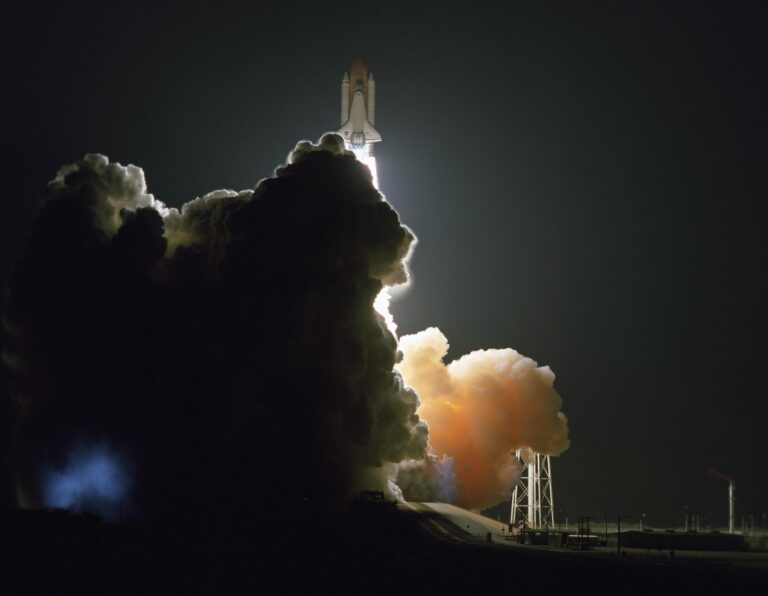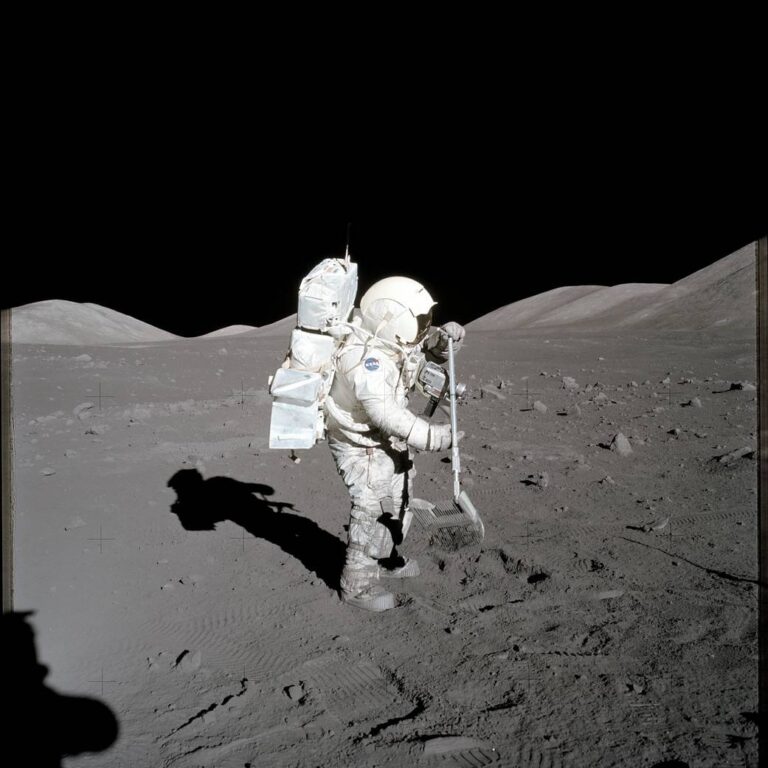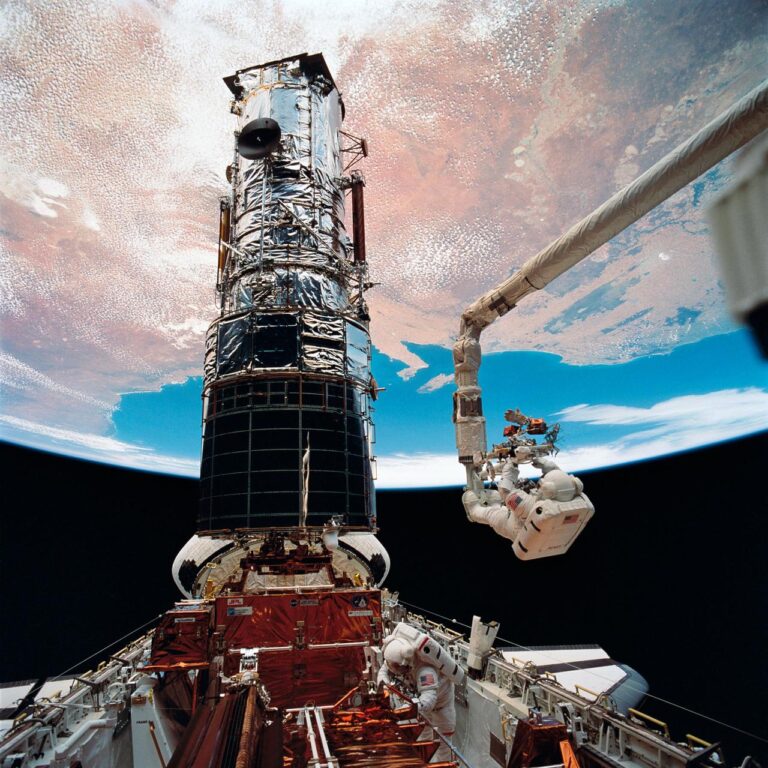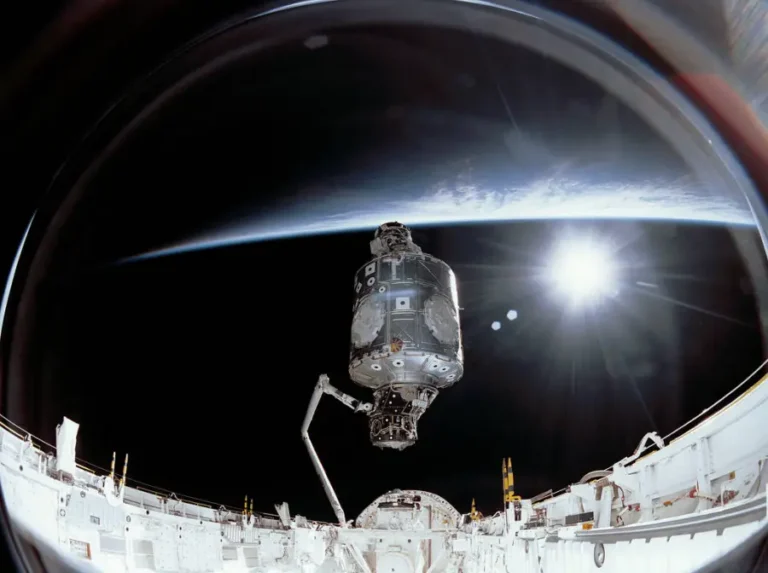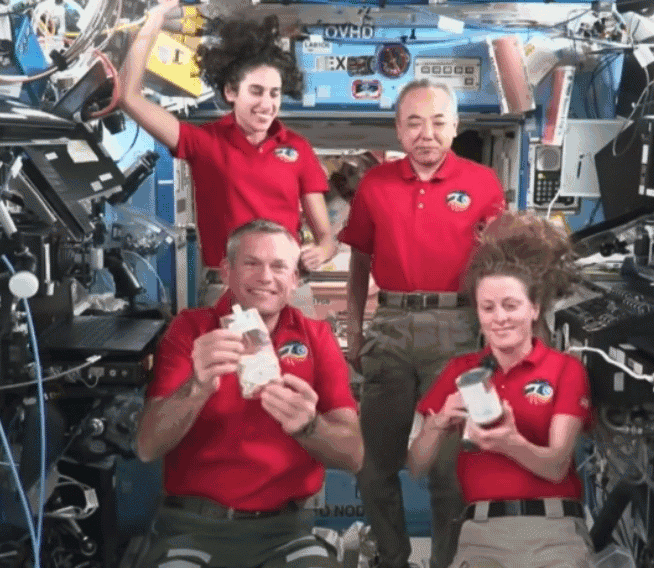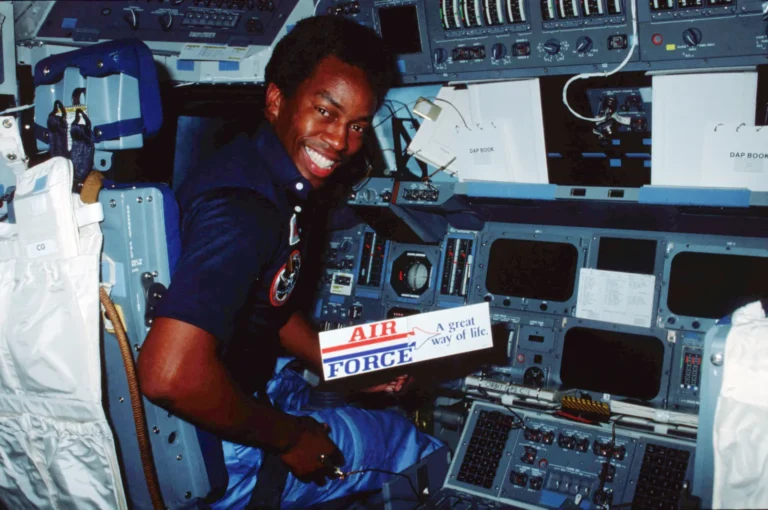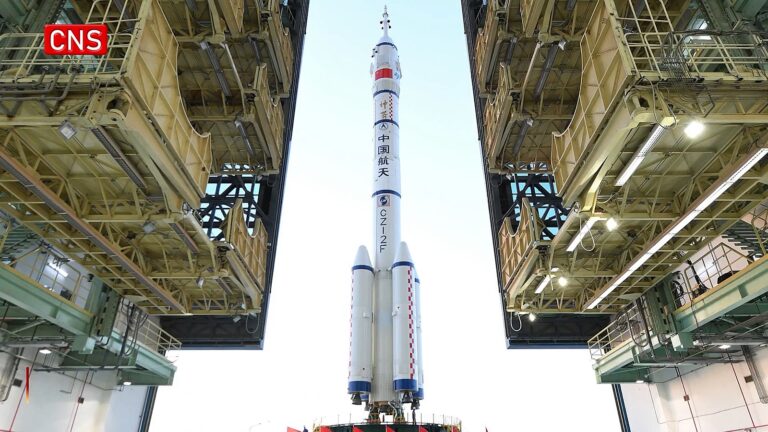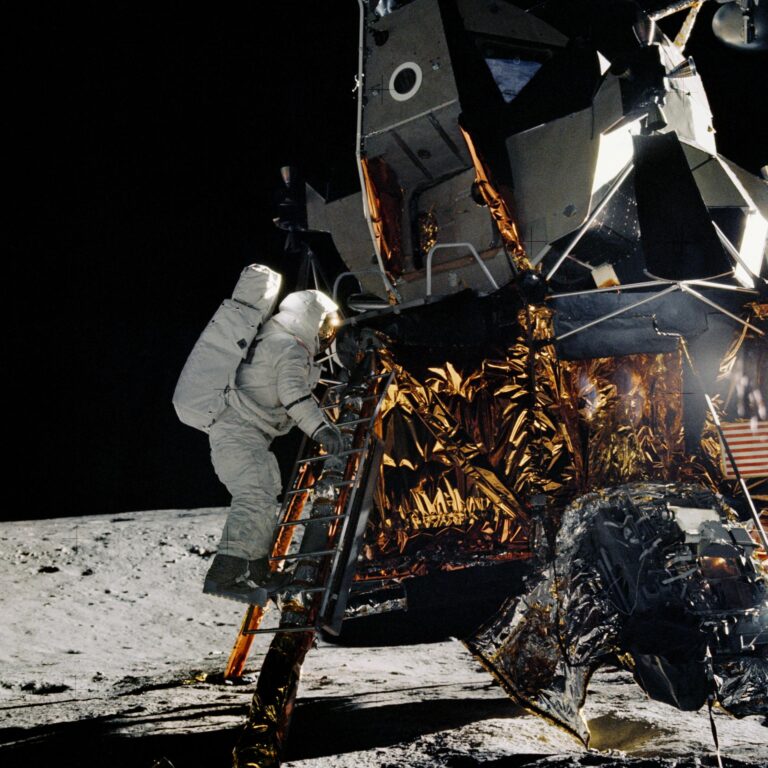Key Takeaways:
It may seem callous to celebrate such distant, cerebral events while so many people are suffering on Earth. But the international collaborations, scientific stretches, and goal-oriented research that enabled those space missions are exactly the same techniques that enabled the deveopment of multiple COVID vaccines at unpredecented speed. Images of the OSIRIS-REx probe kissing asteroid Bennu, or Chang’e-4’s rover rolling across the Moon’s hidden face, also reminded us of the deeper things that we live for.
Food, water, and energy, and information are essential. Everyone deserves fair access to them. That said, devoting just a tiny (truly tiny) portion of the economy to the exploration of space reminds us of the wonder that we are all born with — the sense that we are individuals who belong to a species, a species that belongs to a planet, and a planet that is part of a vast, gorgeous, mysterious universe. In finding what is out there, we find a little more of ourselves, every bit as much as we do through music or art or laughter.
Space exploration also offers its rhythmic certainties. Grand missions require long-term planning and set celestial schedules. Whatever unforeseeable events may happen down here, good or bad, we know that 2021 will offer some grand new adventures up there. Even if there are accidents or malfunctions, the coming year promises to be a banner one in our ongoing peek into the solar system. And no matter what we say or do or think, the cosmos will continue its steady dance, delivering eclipses and conjunctions and other visual delights to anyone willing and able to look up.
Herewith, then, some space highlights for 2021, focusing on the stunning robotic missions on the way.
First Visit to Jupiter’s Trojan Asteroids
In October, NASA is set to launch the Lucy spacecraft. Over its 12-year primary mission, Lucy will visit eight different asteroids. One target lies in the asteroid belt. The other seven are so-called Trojan asteroids that share an orbit with Jupiter, trapped in points of stability 60 degrees ahead of or behind the planet as it goes around the sun. These objects have been trapped in their locations for billions of years, probably since the time of the formation of the solar system. They contain preserved samples of water-rich and carbon-rich material in the outer solar system; some of that material formed Jupiter, while other bits moved inward to contribute to Earth’s life-sustaining composition.
As a whimsical aside: When meteorites strike carbon-rich asteroids, they create tiny carbon crystals. So yes: Lucy will be in the sky with diamonds.
First privately built landers on the Moon
The Israeli Beresheet probe, built by the company SpaceIL, made it to the lunar surface last year, but it ended with a crash landing. This coming year will very likely see the first fully successful commercial lander touch down on the Moon. NASA has contracted with two companies, Astrobotic and Intuitive Machines, to create the Peregrine-1 and IM-1 landers.Astrobotic’s Peregrine will carry 11 instruments, measuring the chemistry, magnetism, and radiation levels on the lunar surface. It will also bring along a Lunar Library: a set of nickel disks etched with an encyclopedia of human knowledge, replicating a set that was lost with Beresheet. Intuitive Machine’s IM-1, meanwhile, will have 5 instruments that focus on navigation experiments and a radio detector designed to do unique studies of low-frequency astronomical sources.
Russia and India return to the Moon?
More than four decades after the Soviet Luna 24 lunar mission, Russia plans to resume robotic exploration of the Moon with Luna 25. The much-delayed mission, which has been under development since the late 1990s, is tentatively set for launch in October 2021. Luna 25 is supposed to initiate a new series of Luna missions in the 2020s. If it fails, the future of Russia’s space-exploration program will look shaky.
The Indian Space Research Organization (ISRO) is attempting its own rebound with the Chandrayaan-3 lunar lander. It is scheduled for a late 2021 launch, although that could slip to 2022. Its predecessor (Chandrayaan-2, obviously) crash-landed on the Moon in 2019; in the meantime, India’s rival China has conducted two high-profile Moon missions. The new mission will mostly repeat Chandrayaan-2’s goals, placing a lander and rover on the Moon, but this time around an orbiter is not part of the program.
A fleet of science cubesats aboard Artemis-1
NASA has been working on plans to bring humans back to the Moon since…well, a really long time. The agency’s huge Space Launch System (SLS) rocket has also been in development for many years. Things are supposed to get serious in November 2021, with the Artemis-1 mission, which will use SLS to send an uncrewed version of the new Orion capsule to the Moon. Thirteen
small missions will hitch along for the ride. These include three lunar orbiters — Lunar Flashlight, Lunar IceCube, and LunaH-Map — that will study water on the Moon’s surface.
Also tucked away on Artemis-1 will be NEA Scout, an innovative spacecraft that will use a solar sail to maneuver to a near-Earth asteroid using only sunshine as its propellant. This mission could be the harbinger of more solar-sail driven space missions.
First real test of planetary defense
I’ve written about this one before: The DART spacecraft, launching this July, will fly to a double asteroid and perform a direct collision with the smaller member of the pair, a 160-meter-wide rock or rubble pile called Dimorphos. NASA and the Japan Aerospace Exploration Agency (JAXA) have fired projectiles at a comet and an asteroid before, but this will be by far the most ambitious test of the technology needed to deflect an asteroid if it is determined to be on a hazardous path that could lead to a collision with the Earth. DART will attempt, for the first time, to measurably change the path of an asteroid by hitting it with a kinetic impactor.
The International Science Armada descends on Mars
In February, robotic probes from three different nations will arrive at Mars, each representing a milestone in the exploration of the Red Planet.
NASA’s Perseverance rover, built on the same basic bones as the earlier Curiosity rover but carrying significantly different instruments, will conduct in-depth chemical surveys of the Martian surface to look for chemical evidence of ancient life. Even more significant, Perseverance will cache the most intriguing Mars samples so that they can be collected and brought back to Earth by a join NASA-European Space Agency mission later in the 2020s.
The United Arab Emirates is sending the Al Amal (Hope) mission to Mars. If successful, it will be the first deep-space science mission conducted by an Arab nation. The spacecraft, developed in collaboration with the University of Colorado-Boulder, is designed to be the most comprehensive weather satellite ever sent to Mars, studying the planet’s daily and seasonal atmospheric changes.
Building on a series of increasingly ambitious lunar missions, China’s space agency developed the Tianwen-1 (Heavenly Questions) probe to extend its reach to Mars. It already made history by ejecting a small camera and establishing a wifi link with the main spacecraft, allowing a unique self-portrait while en route.
The James Webb Space Telescope launches at last (we hope)
In 1996, NASA began developing of the Next Generation Space Telescope, with the aim of sending it up in 2007 and building it on a highly optimistic budget of just $500 million. Fast forward 15 years and the telescope, now known as the James Webb Space Telescope is provisionally set for launch in October 2021, after repeated setbacks and delays. Its budget has swollen to nearly $10 billion.
The payoff from that long effort will be, by far, the largest telescope ever placed in space, with 100 times the light-gathering power of the Hubble Space Telescope. JWST will be optimized for infrared observations, allowing it to study galaxy-formation in the early universe in unprecedented detail. It will also examine the birthplace of new stars and planets and will allow a detailed chemical analysis of the atmospheres of exoplanets. Exoplanet studies were not even part of the telescope’s original science goals, but they could provide a huge advance in the study of habitable worlds and possible signs of life beyond our solar system.
The robot explorers that just won’t quit
The list of ongoing space missions is so extensive now that it fills a Wikipedia page, with significant scrolling required. Highlights include NASA’s Juno probe, which will end its triumphant Jupiter mission by plunging into the planet in July; JAXA’s Akatsuki probe, carrying out its lonely explorations of Venus; New Horizons, looking for a possible next destination in the distant Kuiper Belt; and the Parker Solar Probe and Solar Orbiter, complementary NASA and ESA missions studying the Sun in detail.
Human spaceflight: The next generation
NASA’s Artemis-1 mission will put the agency’s staggeringly expensive SLS rocket and Orion capsule to their first complete test. The aging International Space Station will continue to host crews and carry out in-orbit experiments. But those are only a small part of the progress happening in the world of rocketry and human space exploration.
In the world of commercial spaceflight, SpaceX plans to continue its rapid cadence of testing prototypes for the enormous Starship spacecraft, with the goal of an orbital test flight before the end of 2021. Blue Origin’s New Glenn rocket, designed to carry both astronauts and cargo, should also reach orbit this year. And Boeing’s Starliner space capsule is on track to make its first crewed flight to the International Space Station. The Vulcan Centaur, built by United Space Alliance, is designed only for uncrewed missions, but it promises another approach to low-cost space access. The Peregrine lunar lander will ride aboard its first flight.
Meanwhile, China will begin construction of its new space station in 2021, with the Tianhe (“Joining the Heavens”) module planned to enter Earth orbit in the first half of the year. First crews should follow in short order, although China’s space agency has not announced a specific target date.
For your eyes only
Chances are, you will not personally be flying into space in the coming year. You probably won’t be building a robotic probe to navigate beyond Earth (although I hope a few of you are involved in the process). But there are no limits on who can enjoy the beauty of the universe. All you need is a clear, dark sky and maybe a simple pair of binoculars.
Planetary conjunctions, when two or more planets appear close together in the sky, are pretty events that are typically easy to observe. One of the more difficult but intriguing conjunctions happens on January 20, when Mars will appear very close to Uranus. The latter is too dim to see under suburban skies, but it will readily pop out through binoculars or a small telescope. This is one of the best opportunities you’ll encounter to look at the solar system’s 7th planet.
There is a nice list of other close planetary conjunctions here and some less-compact but especially dramatic sky gatherings here.
Solar eclipses are visible only from very limited parts of the Earth, but the June 10 event will produce a partial eclipse visible from much of Europe and the northeastern United States. To be honest, the really cool views will mostly be the ones you see online; the June eclipse is annular, meaning that it will produce a ring of light when the Sun is mostly, but not entirely, blotted out by the Sun. You can also expect some spectacular photography of the other solar eclipse of 2021, taking place on December 4, which will turn the Sun dark over Antarctica.
The two lunar eclipses of 2021 will not be particularly satisfying ones. Still, the May 26 event will create an unusual setting eclipsed moon from the western United States, and the November 18 eclipse will take a big chunk out of the moon as seen from all across the Americas.
But really, sometimes the most satisfying thing is just following the phases of the moon as it tracks across the sky from night to night, or leaning into a slow-burn ruddy sunset. This is perhaps the simplest and most satisfying resolution I can recommend for the new year: Look up!




